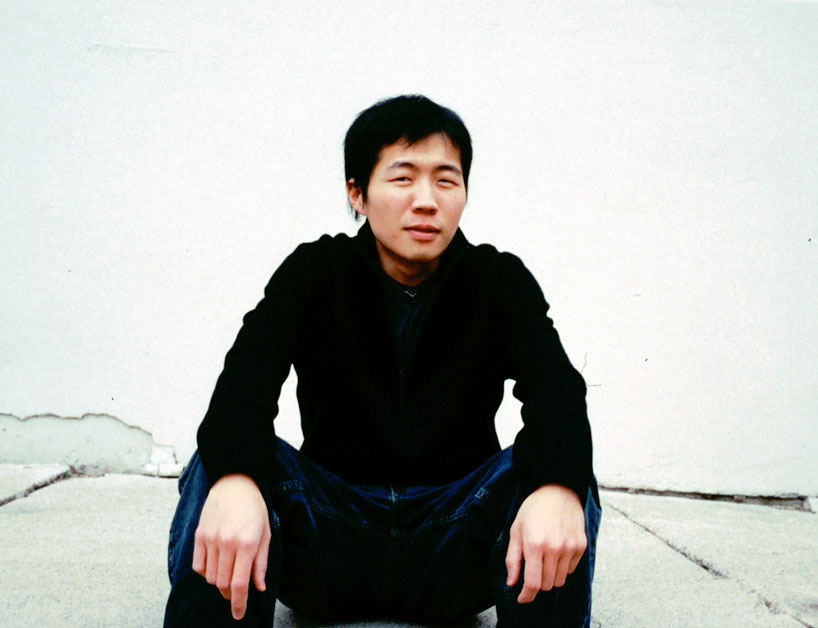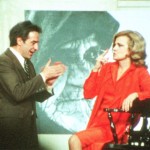Note: The following was written for an issue of Findings devoted to common grace and contemporary culture. This piece is inspired by, if not specifically about, Waking Life.
• • •
Seeking “Holy Moments” at the Movies
“My function is to make whoever sees my films aware of his need to love and to give his love, and aware that beauty is summoning him.”
— Andrei Tarkovsky
Midway through Richard Linklater’s Waking Life (2001) — a wonderful film that is equal parts documentary, animation, philosophical enquiry, and bildungsroman — a remarkable thing happens: Caveh Zahedi, an experimental filmmaker, launches into an impassioned defense of Andre Bazin, the French film critic most known for publishing Cahiers du Cinema and for inspiring the careers of Francois Truffaut, Jean-Luc Godard, and Eric Rohmer, among others. What most excites Zahedi is Bazin’s peculiarly Christian film aesthetic, his faith in the cinema as a medium uniquely capable of recording and revealing God’s active presence in our lives. Because God is manifest in all of creation, or so the argument goes, film by its very nature necessarily documents those manifestations, capturing them on celluloid or video and representing them to us in a darkened theater. For Bazin, the master filmmakers are those most adept at filtering out the mind- and soul-numbing white noise of life in the process, thereby offering us brief glimpses of the transcendent. Zahedi argues that, by revealing these “Holy Moments,” film should (though it seldom does) reorient our perspectives not only toward the arts but also toward the beautifully varied and complex creation in which we live. “We walk around like there are some holy moments, and there are all the other moments that are unholy,” he says, his hands gesturing wildly:
But, this moment is holy, right? Then, in fact, film can let us see that. It can frame it so that we see this moment: holy. Holy, holy, holy, moment by moment. But who can live that way? ‘Cause if I were to look at you and just really let you be holy, I would just stop talking. . . . I’d be open. Then I’d look in your eyes, and I’d cry, and I’d feel all this stuff, and that’s not polite. It would make you uncomfortable.
What follows are several minutes of silence as Zahedi and his companion do just that, deliberately engaging one another — and by extension the Waking Life audience — in a truly transcendent “Holy Moment.”
It is a remarkable scene for a number of reasons. Waking Life follows twenty-something actor Wiley Wiggins as he floats through dream-state conversations with a varied assortment of academics, artists, and travelers, each of whom offers some strategy for making sense of the world. Imagine Dante’s Virgil leading us by hand on a spirited voyage through the Inferno of an undergraduate liberal arts curriculum. Yet even in such an intelligent and joyful film — Roger Ebert has praised Waking Life for its ability to cleanse us of “boredom, indifference, futility and the deadening tyranny of the mundane” — the holy moment sequence stands out as both its most explicitly religious and its most deeply affecting. (And surely any Christian who has watched an American film in recent years can appreciate the welcomed novelty of said combination.) Here, Linklater successfully melds “theory and action,” an ongoing concern of the film, by providing a commentary on the potential contemplative and revelatory uses of film, while simultaneously modeling that process. As Zahedi stares at his friend, his eyes beginning to tear, Linklater cuts to a close-up of Wiggins, who we now discover is watching the scene in a movie theater just as we are. As our surrogate, Wiggins becomes suddenly alive to the strange, inarticulate experience of an encounter with Truth, Beauty, and Goodness. And with the proper orientation, this moment teaches us, so can we.
Working from certain assumptions about common grace — particularly, as Richard Mouw has written, the belief that “God also takes a positive interest in how unbelievers use God-given talents to produce works of beauty and goodness” (49) — I would like to follow Andre Bazin’s lead and propose that Christians take a more active and deliberate approach to the arts, in general, and toward film, in particular. Too often Christian commentary, most notoriously among evangelicals, has reduced “the movies” to morally bankrupt mindless entertainment from which we must be protected. Even those Christian critics who are obviously well-versed in matters of aesthetics seem disproportionably concerned with gleaning banalities from, or simply attaching relevant Bible verses to, the latest Hollywood pabulum. I would argue, instead, that the chief goals of the Christian critic are to inspire in film viewers a thirst for the transcendent by intentionally reorienting their expectations, and to equip them with the skills and knowledge necessary in order to become more fully engaged with the medium itself and with the cultures in which it has been produced. The same goals might also be transferred to all church leaders and “regular Christians” who are concerned with finding the proper place for the arts in their lives as God’s creatures among God’s creation. Seeking holy moments, then — like meditation, study, and isolation — becomes a process, a spiritual discipline that, through devotion and practice, can help us to “enter into a conscious and loving contact with God.”
How the Movies Work
The influential French film critic Serge Daney defined a “cinephile” as one “who expects too much of cinema.” By that standard, one might argue that a large segment of the church in America today is characterized by an unfortunate paradox: we do often expect too much of cinema in that we genuinely fear its corrupting influence, gladly denouncing it publicly when our sensibilities are threatened. And yet we also expect so very little of films, deeming them unworthy of display in our buildings, or discussion in our classrooms and Bible studies. Except on those rare occasions when a particular film is given the mysterious Christian Seal of Approval, we willingly surrender all of cinema to the secular world, choosing to remain silent in a global, century-long conversation with wide-ranging implications. This strikes me as odd, particularly considering that the film viewing habits of most Christians I know are not terribly different from the general population’s.
Our fear of the movies is not, of course, completely unfounded. The impact of violence and explicit sexual content on viewers, both young and old, has been well documented, for instance. But, with the proviso of St. Paul’s warnings against “passions and desires” of the flesh, I would suggest that our greater concern should be with the cinema’s uncanny ability to transform even the most enlightened audiences into passive consumers, a word with obvious moral, theological, and political implications. The Soviet filmmaker Andrei Tarkovsky, a devout Russian Orthodox, called this tendency “tragic”: “if art can stimulate emotions and ideas, mass-appeal cinema, because of its easy, irresistible effect, extinguishes all traces of thought and feeling irrevocably. People cease to feel any need for the beautiful or the spiritual, and consume films like bottles of Coca-Cola.” Instead of entering the New Releases aisle with only a checklist of objectionable words and situations in hand, we should also be consciously aware of our own thirst for “mindless entertainment,” a concept — at least as it is typically employed — for which I have yet to find Biblical precedent. As Richard Foster has noted, “Superficiality is the curse of our age,” and superficiality is precisely the stock and trade of the movies. Fortunately, we can combat this tendency by choosing to become actively engaged in the viewing process, which begins by learning something of how films work.
A grammar of filmmaking slowly evolved during the medium’s early decades, thanks in large part to the experiments of people like Louis and Auguste Lumiere in Paris, Sergei Eisenstein in Moscow, and D.W. Griffith in Los Angeles. Their various styles finally coalesced in what is typically called “standard continuity editing of the classical Hollywood cinema.” Nearly a century later, most of us now internalize these standards before we have even learned to read. Knowing the jargon of continuity editing — shot/countershot, dissolve, match on action, etc. — is useful in discussions, but is less important than becoming consciously aware of their general effect, which is to precisely direct the audience’s viewing experience, often with discomforting moral consequences.
The textbook example is Alfred Hitchcock’s Psycho (1960), which accomplishes the unthinkable by forcing us, midway through the film, to transfer our emotional allegiances from Marion Crane (Janet Leigh) to her murderer, Norman Bates (Anthony Perkins). For the first forty minutes, we experience the world of the film through Marion’s subjectivity, a feat that Hitchcock accomplishes by cutting constantly from close-ups of her face to medium shots of her surroundings. Through these “eyeline matches” we come to identify with Marion, quite literally experiencing her anxiety as she decides to leave town, and her terror when she wakes to the sight of a policeman’s face. Once at the Bates Motel, though, our perspective slowly shifts to Norman’s, the transition becoming complete when he peers at Marion through a hole in the motel wall. Now, instead of seeing the world through Marion’s eyes, we are staring at her, joining Norman in his voyeuristic thrill. The hand-wringing nervousness that we experience as Norman attempts to cover up his crime is testament to Hitchcock’s prowess as a master crowd-pleaser.
And it is also testament to just how easily films co-opt our imaginations, manipulating us into experiencing an intensity of emotion for characters and situations that are completely unworthy of our empathy. Offering as an alternative to this style Orson Welles’s Citizen Kane (1941), a film that refuses such manipulation by its combination of long takes and deep focus shots, Bazin writes:
Classical editing totally suppresses this kind of reciprocal freedom between us and the object. It substitutes for a free organization a forced shot breakdown where the logic of each shot is controlled by the reporting of the action. This utterly anaesthetizes our freedom. . . . It ‘subjectivizes’ the event in the extreme, since each moment or particle then becomes the foregone conclusion of the director.
Hence, in Psycho we become personally invested in the plights of, first, a thieving adulteress, then a psychotic murderer because Hitchcock has given us no other option. We have no choice but to become passive participants, simply along for the ride. (Not by coincidence, popular films are often compared to amusement park entertainments, a fact that Hitchcock would have found quite gratifying.)
Bazin’s critique is not unlike that leveled by fiction writers of the mid- and late-19th century, who reacted against the sensationalism of the popular sentimental novel by proposing a new brand of Realism. William Dean Howells could be describing any number of Hollywood blockbusters when he writes, “Let fiction cease to lie about life; . . . let it leave off painting dolls and working them by springs and wires.” Trained like Pavlov’s dogs to feel heroic when we see a low-angle shot of a movie star, or nostalgic when we hear a Frank Sinatra tune (regardless of whether or not we actually possess any genuine memories of his music), our ability to properly experience, process, and share authentic emotion tends to atrophy. Thomas Merton writes:
The constant din of empty words and machine noises, the endless booming of loudspeakers end by making true communication and true communion almost impossible. Each individual in the mass is insulated by thick layers of insensibility. He doesn’t care, he doesn’t hear, he doesn’t think. He does not act, he is pushed. He does not talk, he produces conventional sounds when stimulated by appropriate noises. He does not think, he secretes clichés. . . . But to live in the midst of others, sharing nothing with them but the common noise and the general distraction, isolates a man in the worst way, separates him from reality in a way that is almost painless.
This “anaesthetized” way of life is perhaps the greatest threat facing the church today. While film is not the primary remedy, of course — the spiritual disciplines should be practiced intentionally — we need to recognize and exploit our body’s submersion in film culture, raising their expectations and training them to meditate, thoughtfully and spiritually, on the movies that they watch.
An Alternative Approach
In a useful (and typically beautiful) analogy, Tarkovsky describes modern man standing at a crossroads, “faced with the choice of whether to pursue the existence of a blind consumer, . . . or to seek out a way that will lead to spiritual responsibility, a way that ultimately might mean not only his personal salvation but also the saving of society at large; in other words, to turn to God.” Tarkovsky is unquestionably cinema’s most eloquent and persuasive spokesman for the potential of film to render man’s soul capable of improvement. For him, as has been the case for so many of history’s saints and theologians, great art is a profound vehicle through which God offers brief glimpses of his unfathomable holiness. Film, for Tarkovsky, is like the bolt of lightning described by Calvin that illuminates the path of an unbeliever before plunging him back into darkness, still wandering but forever altered by the vision. “The idea of infinity,” Tarkovsky writes, “cannot be expressed in words or even described, but it can be apprehended through art, which makes infinity tangible.” This sentiment is echoed by Ingmar Bergman, who has claimed to make films because they allow him to touch “wordless secrets that only the cinema can discover.”
In a word, film is capable of offering that rare experience of transcendence. Though casually dismissed by postmodern critics as either biological (a rush of endorphins) or ideological (a ritual construct of dominant mythologies and passé metanarratives), the transcendent power of art has been a constant of human experience, sacred and secular alike. Speaking of his delight in music, Luther wrote that it makes it “possible to taste with wonder (yet not to comprehend) God’s absolute and perfect wisdom.” Friedrich Schleiermacher argued, like every good Romantic, that art gave him a “sense and taste for the infinite.” Calvinist historian Gerardus van der Leeuw wrote: “Every true work of art is in a sense religious. Every true work of art bears within itself the germ of self-abolishment. The lines yearn to be erased, the colors to pale. Every true art is experienced as the incarnation of what is further distant from us, and different.” Richard Foster has marveled at God’s sanctification of our imaginations: “He uses the images we know and understand to teach us about the unseen world of which we know so little and which we find so difficult to understand.” And St. Augustine often defended his excitement for beauty by citing Romans 1:20: “For since the creation of the world His invisible attributes — His eternal power and divine nature — have been clearly seen, because they are understood through what has been made.” Tarkovsky likewise makes explicit this connection between the Creator and His creation in the closing sentences of Sculpting in Time: “Perhaps the meaning of all human activity lies in artistic consciousness, in the pointless and selfless creative act? Perhaps our capacity to create is evidence that we ourselves were created in the image and likeness of God?”
My rhetorical strategy should be obvious here: I am deliberately blurring the boundaries that have grown up between film and the other artistic media, and am attempting to inject cinema into a theological discussion that began several centuries before the medium was invented. More specifically, I wish to elevate film onto the same plane on which Christian critics have gladly placed literature, music, and painting, for instance — that is, art forms through which God reveals His wisdom and in which He takes delight. In Celebration of Discipline, Foster enthusiastically encourages readers to study the plays of Shakespeare and the novels of Tolstoy, those works that “take up the central issues of life,” but Christians seldom expect a similarly enlightening experience from the movies that they watch. This can be attributed to a variety of reasons, most of them associated with the “business” of filmmaking. Ultimately, though, I am suggesting that any serious-minded, Christ-centered discussion of film will necessarily raise the question of taste, a field pocked with theological, sociological, and aesthetic landmines. For instance, Foster would argue, I assume, that a Christian is more likely to benefit from the study of John Milton than of Tom Clancy (and I would agree), but many in the church enjoy losing themselves in a military thriller and see no harm in doing so. Likewise, I believe that the typical film viewer is much more likely to experience a holy moment when contemplating Carl Theodor Dreyer, as opposed to, say, Michael Bay, but many Christians were inspired by the treacly jingoism of Pearl Harbor (2001). What is a Christian aesthetician or cultural critic to do?
Frank Burch Brown has contributed significantly to this discussion by reconceptualizing taste as a spiritual discipline. “What we can affirm, minimally,” he writes, “is that denial or restraint of the senses (not to mention the imagination) is not inherently superior to training the physical eyes to see and enjoy spiritually. And now more boldly: Because we are embodied souls, the physical senses can themselves be spiritual senses, when rightly used and enjoyed.” Brown’s emphasis here upon our behavior, on our need to train our senses in order to use them rightly, carries into his three-pronged definition of taste: aesthetic perceiving, enjoying, and judging. This model closely mirrors Foster’s guide to reading: understanding, interpreting, and evaluating.
Applying this methodology to a viewing of Dreyer’s The Passion of Joan of Arc (1927), we would begin by noting how each individual apperceives, or “takes in,” the film differently. Aesthetic perception will inevitably vary because each viewer is biased by his or her own particular experiences and expectations. In one seat there might be a man who has never seen a silent film of any sort, while beside him sits a woman who instantly recognizes Dreyer’s deliberate disavowal of standard continuity editing and the influence of German Expressionism on his cinematography. The two viewers will, in effect, perceive very different films. This disconnect is most obvious today in the prominent debate over worship music. Brown, a composer and music scholar, suggests that rather than discarding Bach’s cantatas (to take one of countless examples), we should instead introduce and discuss them in our church classrooms, “just as one discusses (or hopes to discuss) theology and scripture.” The lesson to be learned here is the importance of actively developing our perceptive faculties so that our senses might become more finely tuned for spiritual purposes, rather than simply absorbing our tastes arbitrarily as if through osmosis — “liking” automatically what is generally liked by others in our social, economic, gender, and age groups.
But perceiving is only the first part of the process. Brown recounts St. Augustine’s boast in the Confessions of having overcome his emotional attachment to the music of the Psalms, which now allowed him to more fully appreciate and meditate upon the truth of the verse. This intellectual distance is a mistake, though, because those desired moments of transcendent inspiration “can transpire only if one can appreciate, enjoy, or be moved by what one is perceiving in the art.” Enjoyment, for Brown, is both spontaneous and carefully orchestrated by cues within the work. The Psalms, then, are so worthy of meditation because of their perfect coherence — their setting of divine content within rapturous rhythms and songs. In Passion, Dreyer transforms St. Joan into an icon of rigorous faith and integrity amid worldly oppression by cutting systematically between close-ups of her desperate face and slow tracking shots along the rows of her angry accusers. This harmony of form and function, a hallmark of all great art, will typically produce a more enjoyable affect. And conversely, when a dissonance arises between a work and its alleged purpose, we are much more likely to be disappointed. By comparison, Luc Besson’s The Messenger: The Story of Joan of Arc (1999) has been roundly criticized for appropriating Joan’s story of faith and conscience and setting it amid a glamorous, computer-generated, historical epic.
This final act of evaluation, of deeming Dreyer’s film better than Besson’s, is part of what Brown means by “judging.” A common mistake, though, is jumping too quickly to the making of appraisals before we have critically examined our own ability (or, more often, our desire) to properly perceive and enjoy a work of art. “We give a critical analysis of a book before we understand what it says,” writes Foster. Tarkovsky railed against this brand of soul-deadening apathy:
The beautiful is hidden from the eyes of those who are not searching for the truth, for whom it is contra-indicated. But the profound lack of spirituality of those people who see art and condemn it, the fact that they are neither willing nor ready to consider the meaning and aim of their existence in any higher sense, is often masked by the vulgarly simplistic cry, ‘I don’t like it!’ ‘It’s boring!’
Tarkovsky’s hyperbole should, perhaps, be forgiven — he spent much of his shortened career defending his aesthetic to Soviet authorities — so that we might, without bias, wrestle with the consequences of his statement. For Tarkovsky, the thoughtless, knee-jerk resistance to art is just one symptom of a more general and increasingly prevalent spiritual malaise. Like Pascal, who reasoned that men are so unhappy because “they cannot stay quietly in their own chamber,” Tarkovsky recognized that, in our surrender to distractions, movies chief among them, we have sinfully distanced ourselves from earthly responsibilities.
While all Christians have been uniquely gifted, meaning that some more than others will be naturally predisposed to experiencing God’s transcendence through the arts, all have been commanded to hunger and thirst for righteousness, a command that extends to all areas of our lives. Rather than “mindless entertainment,” we should instead be seeking from the cinema what the church Fathers called Otium Sanctum, or “holy leisure.” The two concepts are diametrically opposed to one another: the former is an earth-bound escape from heavenly communion; the latter is the restorative peace that comes from seeking God’s truth. Otium Sanctum is what Benedictine monks pursue when they begin each day by praying Psalm 95 with its admonition: “Oh that today you would listen to His voice!” And it is what Richard Mouw is describing when he writes of common grace: “In a society that emphasizes the limitless possibilities of the individual self, it comes as a strange freshness to be confronted by an unfathomable God, indifferent to the petty, self-conscious needs that consume us.” Film, when rightly enjoyed, can offer holy moments such as this during which we are able to escape, even if only temporarily, from this “extraordinary egoism” into the freedom of God’s grace, experiencing anew the beautiful complexity of his creation and our selfless calling in it.








